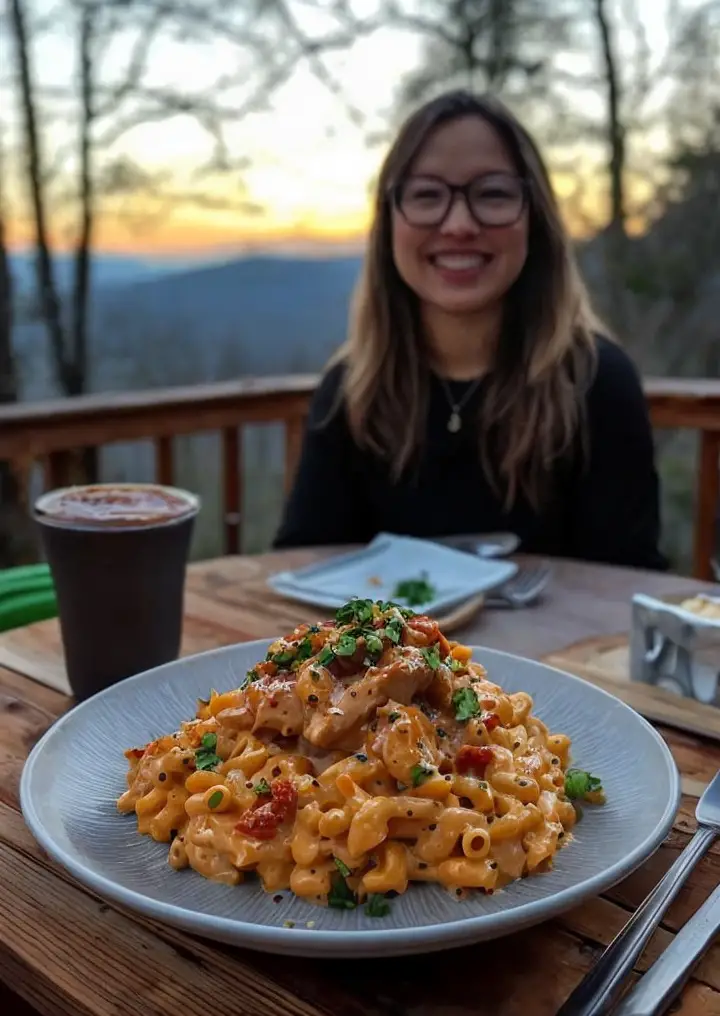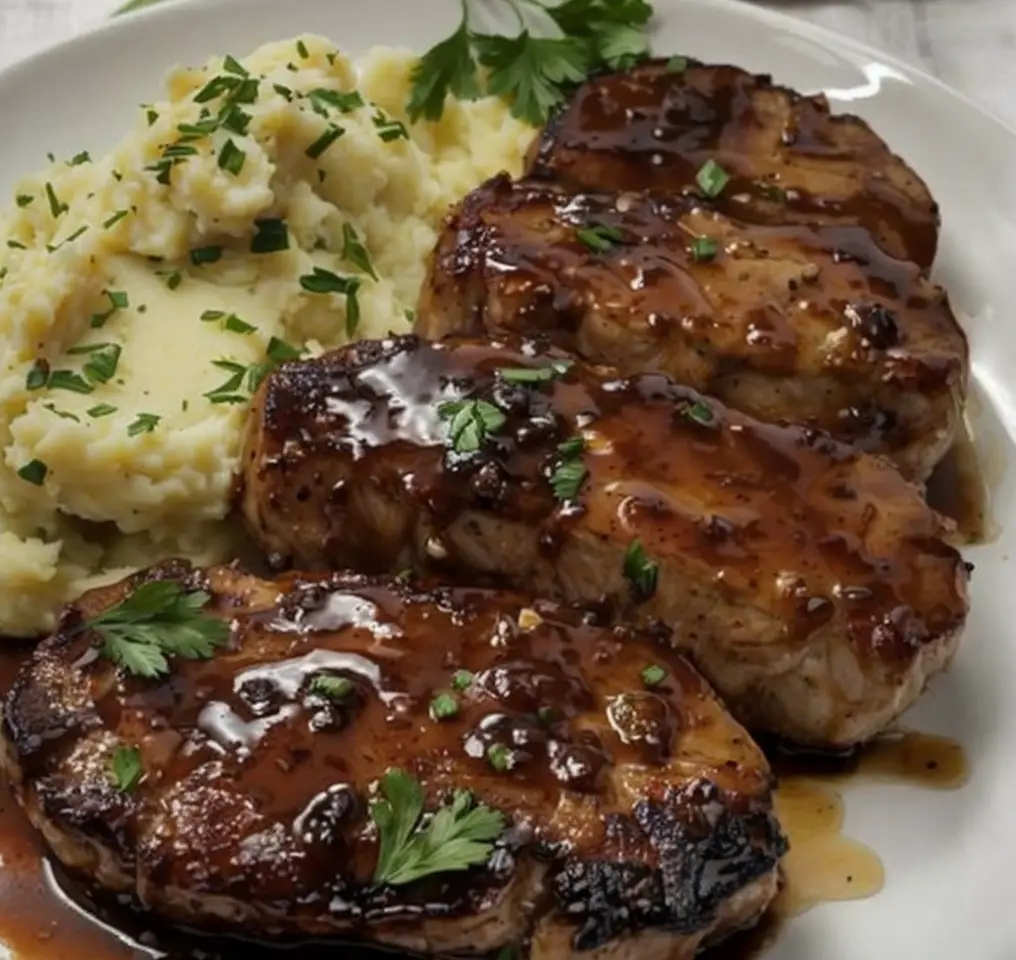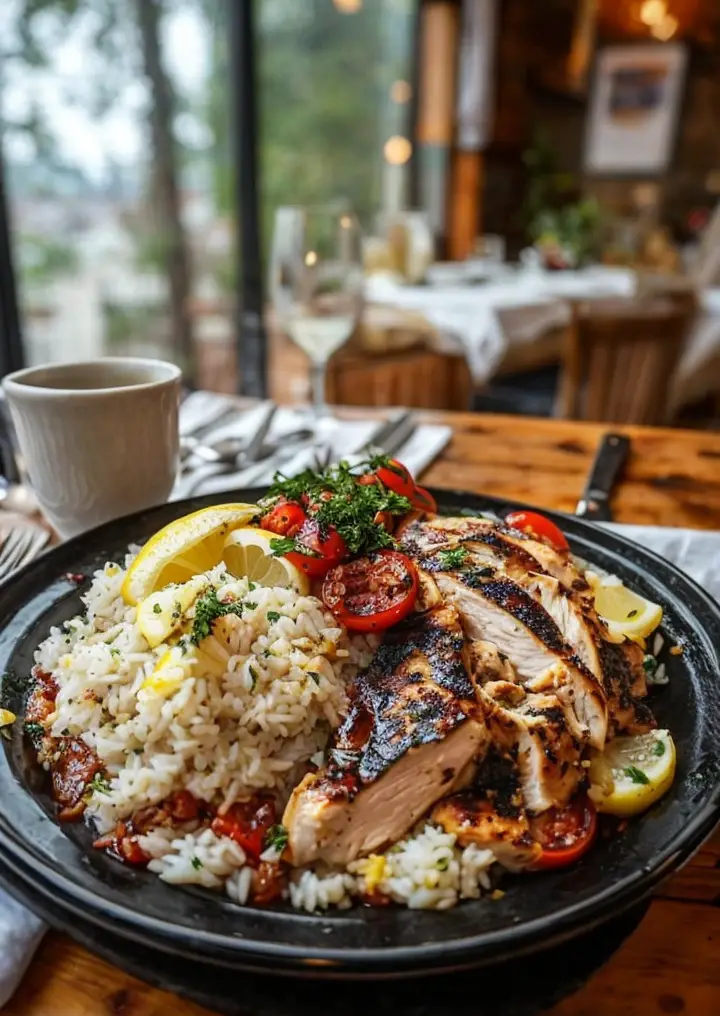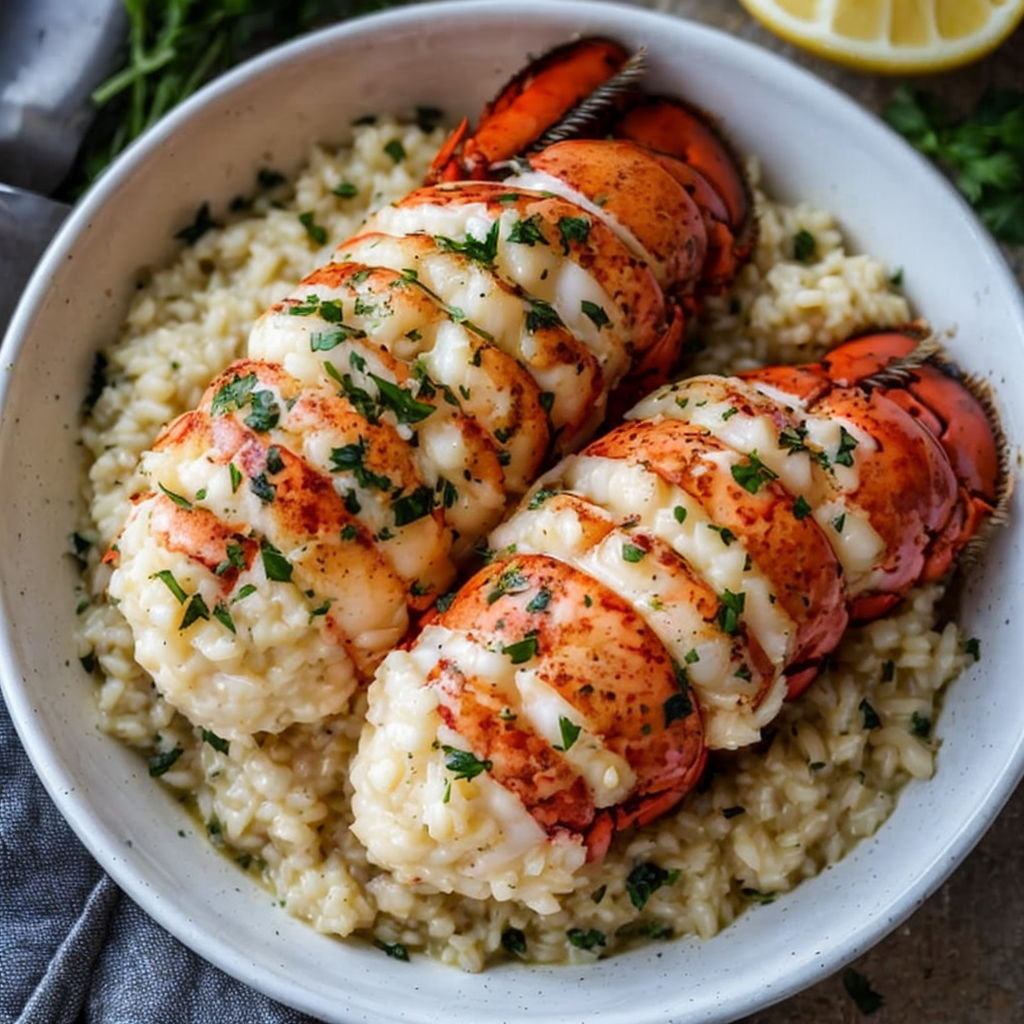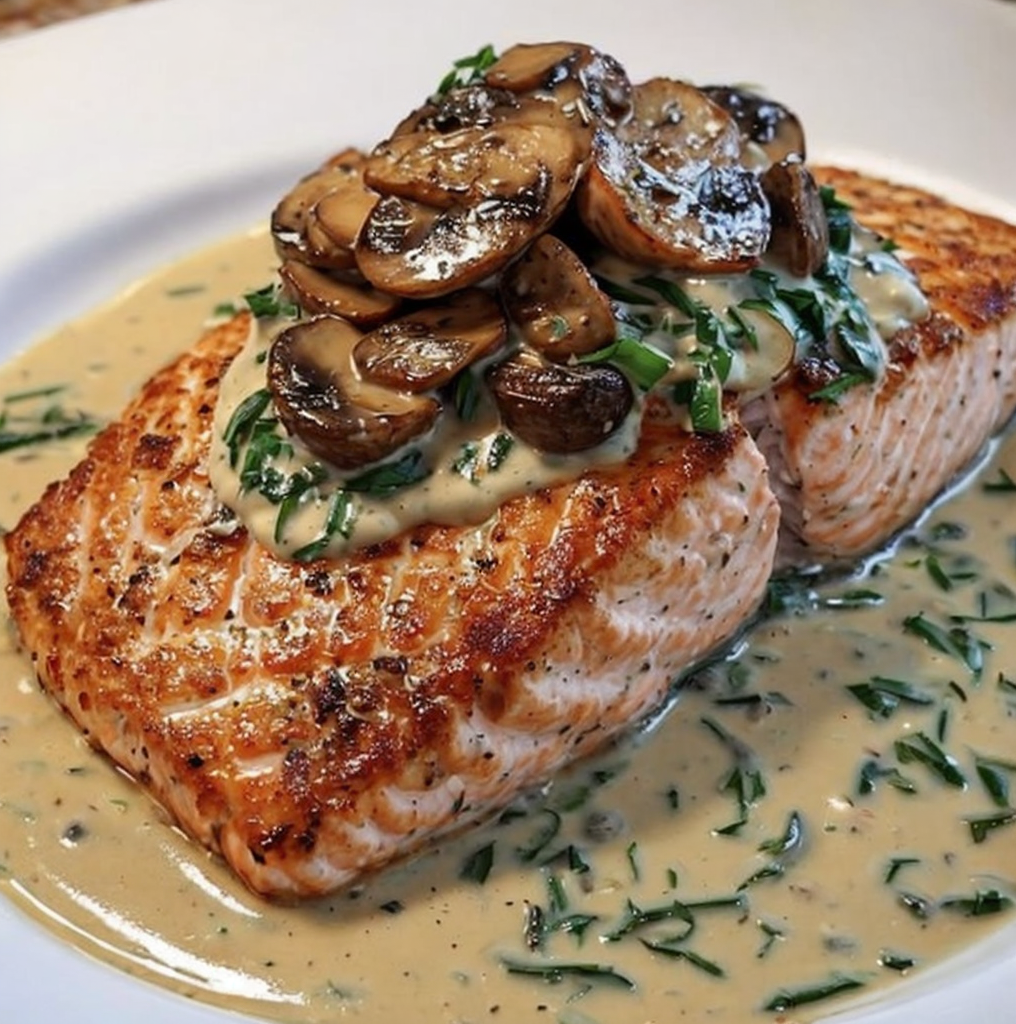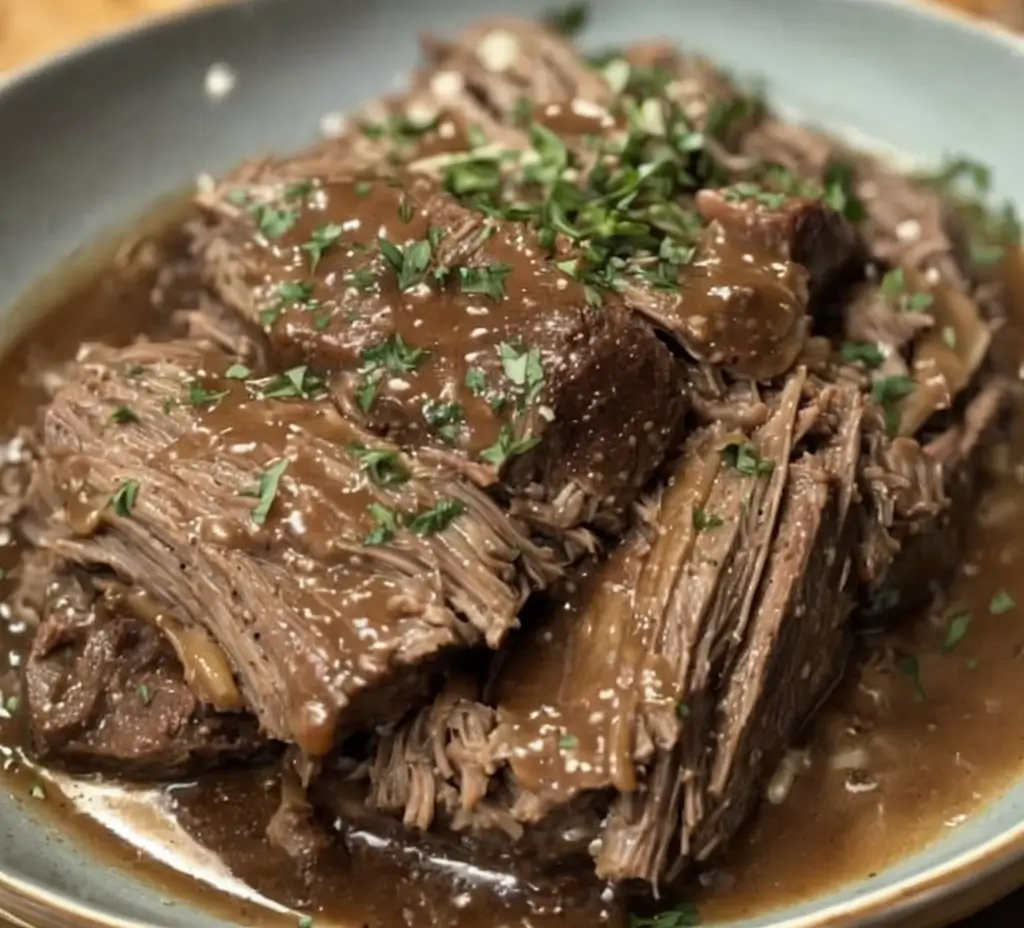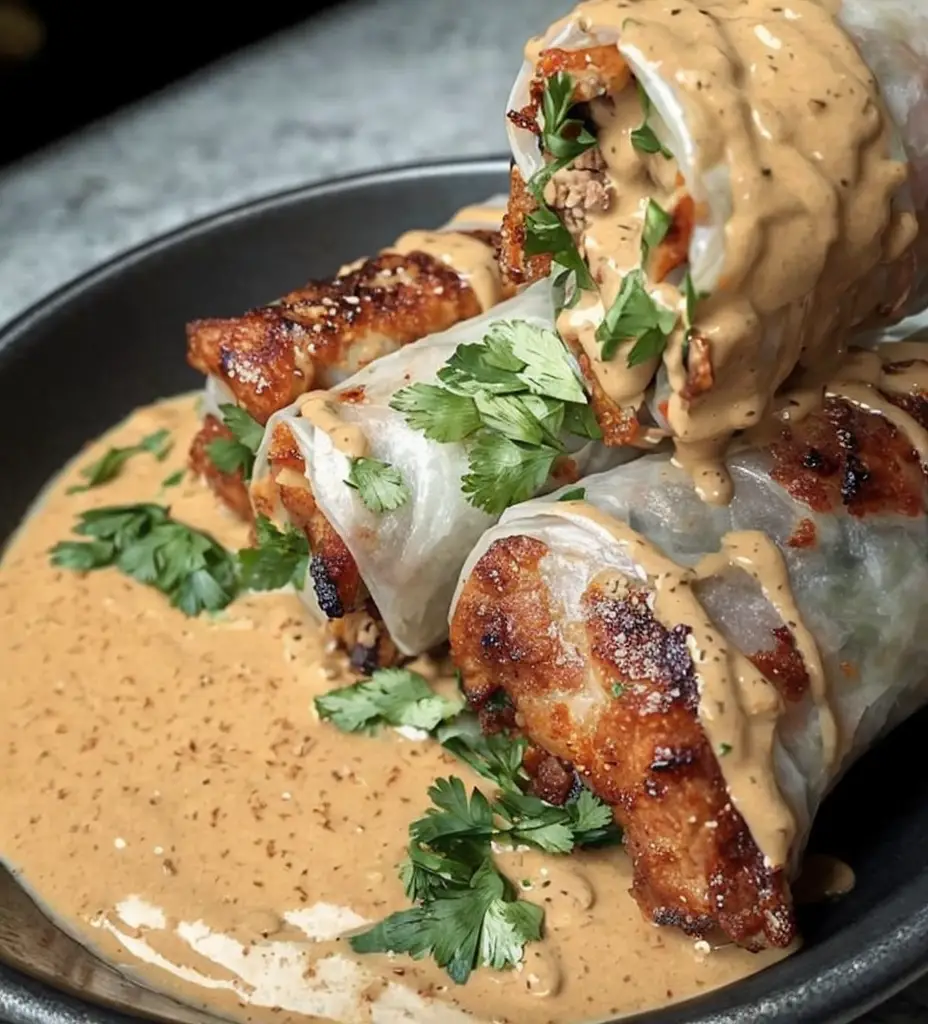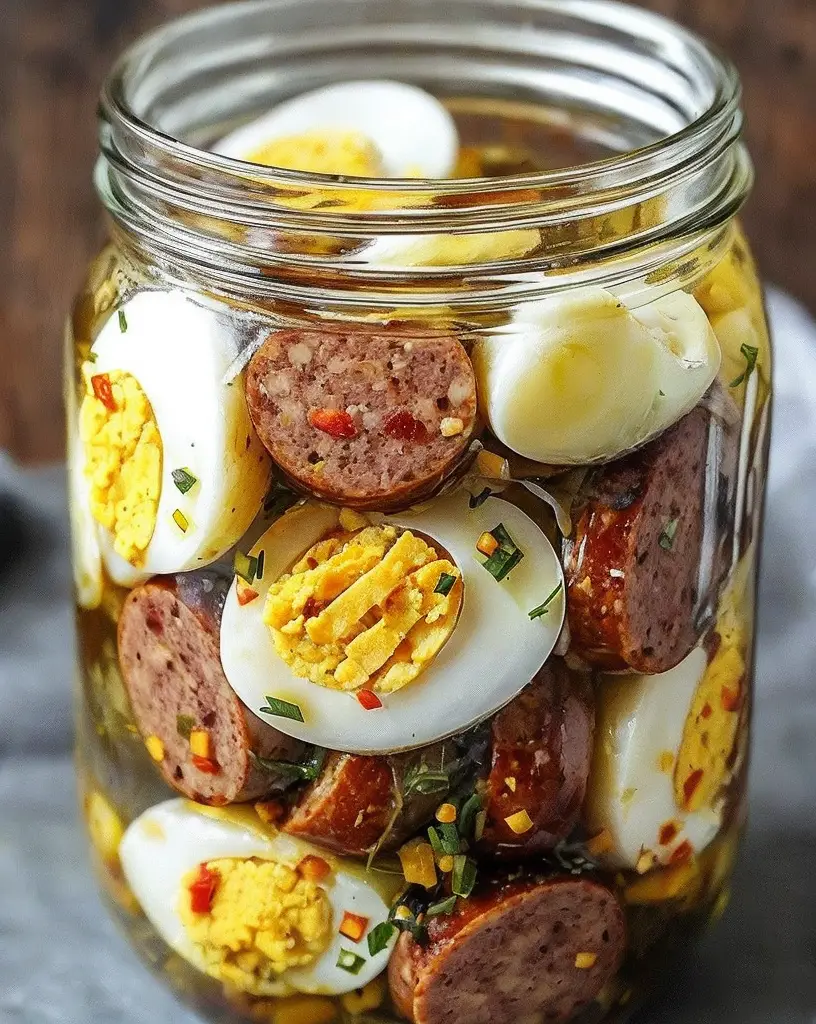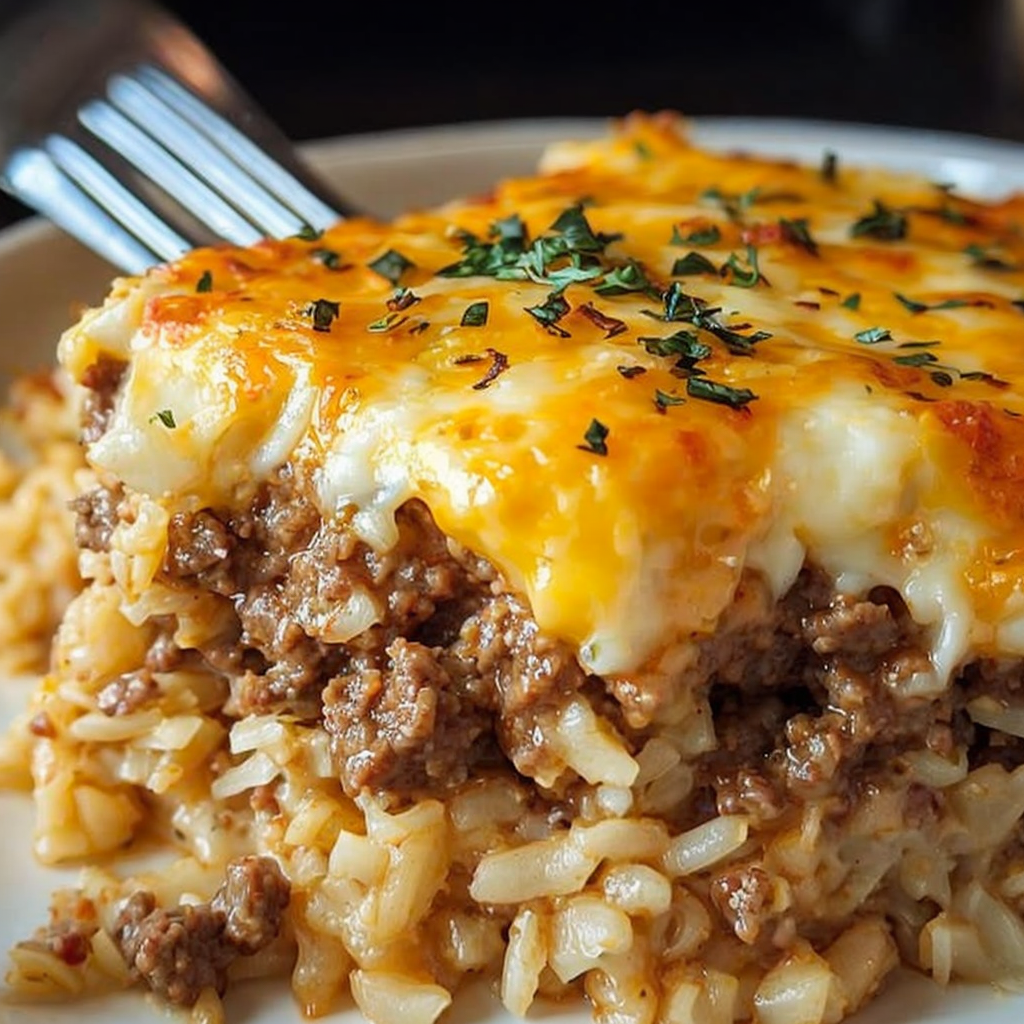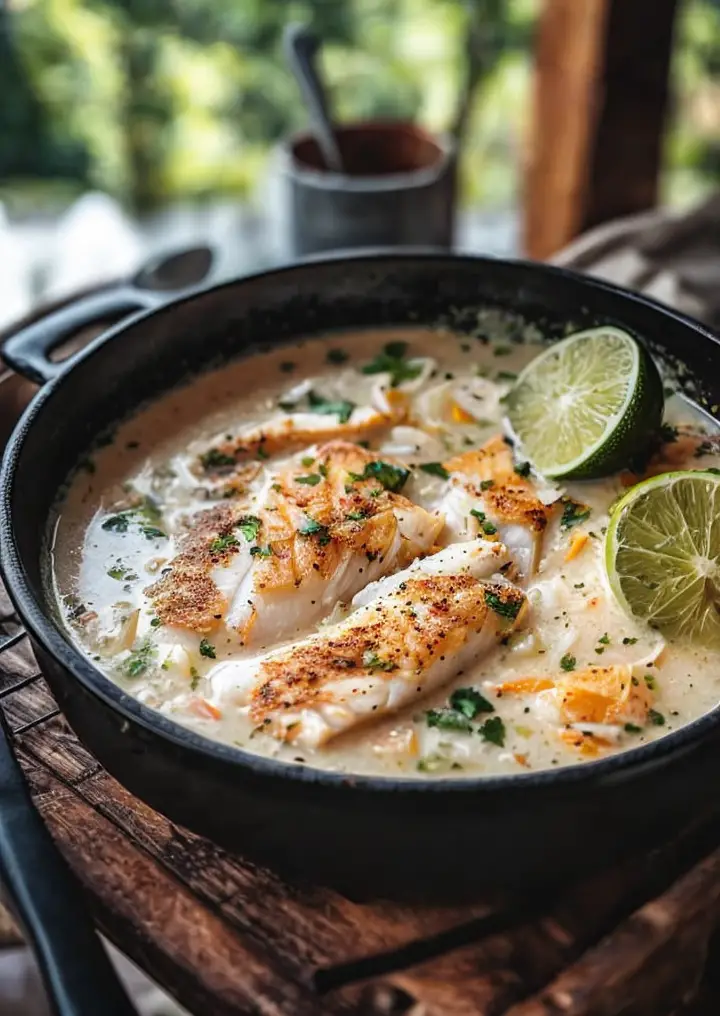Creamy Honey Pepper Chicken Mac and Cheese Delight: A Comforting Culinary Experience
Welcome to the world of creamy comforts where the Creamy Honey Pepper Chicken Mac and Cheese Delight reigns supreme! This dish is not just a meal but a warm hug crafted to elevate your comfort food experience. A rich, velvety cheese sauce envelops perfectly cooked macaroni, adorned with succulent pieces of honey-glazed chicken, all brought to life by a touch of pepper that ignites your palate. A sprinkle of fresh herbs adds a touch of brightness, making it a hearty, satisfying dish perfect for dinnertime gatherings or cozy nights in.
As you dive into this indulgent masterpiece, you’ll discover the beautiful marriage of flavors that this recipe offers. The sweetness of honey blends seamlessly with the savory notes of the chicken, while each spoonful of macaroni offers a creamy texture that dances on your taste buds. This is not just mac and cheese; it’s an explosion of flavors, a burst of satisfaction, and an embrace of warmth, sure to become a family favorite.
Quick Recipe Highlights
- Flavor Profile: The creamy blend of sharp and smooth cheeses creates a rich flavor, perfectly complemented by the sweetness of honey and kick of pepper.
- Texture: This dish balances a creamy, luscious sauce with tender chicken pieces and al dente pasta, giving every bite a satisfying mouthfeel.
- Aroma: The inviting aroma of melty cheese and honey-glazed chicken wafts through the kitchen, making it hard to resist.
- Visual Appeal: A delightful golden-brown topping and vibrant colors from the pepper make this dish truly eye-catching.
- Skill Level Needed: While it requires a bit of skill with sauces and baking, even novice cooks can master it with ease!
- Special Equipment: A large pot, baking dish, and a whisk are essential to achieving the perfect consistency and bake.
Recipe Overview
- Difficulty Level: This recipe is classified as medium, involving various cooking techniques including sautéing, baking, and creating a creamy sauce, perfect for anyone looking to enhance their culinary skills.
- Category: The Creamy Honey Pepper Chicken Mac and Cheese Delight fits perfectly into the main course category, offering a substantial meal for any occasion.
- Cuisine: With roots in American comfort food, this dish combines traditional mac and cheese elements with a gourmet twist, showcasing regional influences.
- Cost: The ingredient costs are friendly, averaging around $15-20, depending on local prices and seasonal variations.
- Season: This dish shines during fall and winter, as its rich flavors warm you up during cooler months.
- Occasion: Perfect for family meals, cozy gatherings, or potlucks, this mac and cheese is sure to impress!
Why You’ll Love This Recipe
The appeal of the Creamy Honey Pepper Chicken Mac and Cheese Delight lies not only in its taste but also its luscious texture. Each spoonful is a harmonious blend of creamy cheese and tender chicken, wrapped in the familiar comfort of macaroni. The contrast of sweet honey and zesty pepper makes each bite exciting – it’s wholesome comfort food elevated to gourmet status. This recipe is designed to be a crowd-pleaser, perfect for families and gatherings alike.
Preparation is fast and straightforward, making this dish a convenient choice for busy weeknights or last-minute entertaining. In less than an hour, you can have a decadent meal ready that feels lovingly homemade. The warming aromas and beautiful presentation resonate with both nostalgia and sophistication, ensuring that everyone at the table feels catered to.
From a nutritional perspective, the combination of cheese, chicken, and macaroni offers a balanced taste while still indulging your comfort food cravings. High in protein thanks to the chicken and packed with carbohydrates from the pasta, this dish serves as a fulfilling option for a satisfying dinner.
The social aspect of this dish makes it even more appealing – it encourages sharing and gathering. Whether it’s family dinners or informal get-togethers with friends, this dish is perfect for bringing people together, fostering warmth, and creating memories around the table.
Cost-effective and easy to prepare, the Creamy Honey Pepper Chicken Mac and Cheese Delight makes an accessible treat for many households. It offers a rich taste without a heavy price tag, ensuring everyone can enjoy a creamy mac and cheese masterpiece.
Historical Background and Cultural Significance
The origins of mac and cheese can be traced back to Italy, but it was in America that it evolved into the classic comfort food we cherish today. The addition of chicken and honey takes this traditional recipe to the next level, enriching the dish’s history with layers of flavor. By incorporating local ingredients and flavors, this adaptation celebrates American ingenuity in the culinary arts.
Within American culture, mac and cheese holds a treasured place, often evoking feelings of nostalgia. From childhood memories of school lunches to family gatherings, it remains a dish that brings people together. The sweet and savory modifications introduce a modern twist, showcasing how culinary traditions evolve while still paying homage to their origins.
As recipes evolve over time, regional variations emerged, with some incorporating different proteins or cheeses. This particular version highlights the delightful sweetness of honey paired with the spice of pepper, a nod to modern palates that appreciate the balance of flavors. The adaptation of honey also reflects a growing trend towards incorporating natural sweeteners into savory dishes, further connecting our culinary practices to contemporary tastes.
Ultimately, the Creamy Honey Pepper Chicken Mac and Cheese Delight serves as a celebration of both heritage and creativity. It is a reminder that while some dishes are grounded in tradition, there is always room for innovation and personal touch, creating new family favorites destined to be cherished in the years to come.
Ingredient Deep Dive
Macaroni
Macaroni, a staple in many households, has a rich history dating back to ancient civilizations. This pasta is beloved for its ability to capture sauce, making it the perfect vehicle for creamy mixtures. It’s typically made from durum wheat, offering a high protein content while remaining versatile for various recipes. When selecting macaroni, opt for brands that promise a firm texture and high-quality ingredients; check for a semolina wheat basis, as this yields superior flavor and integrity.
Proper storage of macaroni should involve an airtight container in a cool, dry place. It can last for years, making it a pantry hero! For substitutions, consider gluten-free pasta or whole grain options to meet dietary preferences without compromising on texture or flavor.
Chicken
Chicken is a globally favored protein that not only provides versatility in cooking but also offers numerous health benefits. Rich in protein, it supports muscle growth and weight management, making it a common choice for healthy meals. When selecting chicken for this recipe, choose fresh or properly frozen cuts, preferably organic for better flavor. Always look for pink, firm meat without any dryness, ensuring freshness.
When storing chicken, refrigerate immediately if fresh or freeze if you won’t use it within a couple of days. Raw chicken should never be left at room temperature. If you’re looking for an alternative, turkey breast can be used as a lean substitute without losing the essential characteristics of the dish.
Cheese
The star of this recipe, cheese, has a fascinating history and varieties that span cultures worldwide. This recipe typically features cheddar, known for its sharp and creamy profile that melts beautifully. The nutritional benefits of cheese are vast, providing calcium, protein, and a depth of flavor that enhances dishes. When choosing cheese, look for aged varieties, which tend to be richer and can elevate your mac and cheese experience.
To store cheese, wrap it tightly in wax paper or plastic wrap, and keep it in the vegetable drawer of your refrigerator. For substitutions, explore alternatives like Gruyère for a nutty flavor or Gouda for a smokier taste, creating exciting changes to this classic recipe.
Common Mistakes to Avoid
- Not salting the pasta water: This crucial step enhances flavors and ensures that your pasta is seasoned right from the start.
- Using low-quality cheese: Deli cheeses or pre-shredded options often lack flavor; fresh block cheese generally melts better and tastes superior.
- Overcooking the pasta: Al dente pasta holds up better in the oven; overcooked pasta can become mushy and unappetizing.
- Skipping the roux: This technique is vital for creating a thick, creamy sauce; don’t rush through or skip this step for the best results.
- Not letting the cheese sauce cool: Adding hot cheese to the pasta can lead to clumping; allowing it to cool slightly ensures a smoother sauce.
- Not incorporating enough pepper: This dish needs a kick! Adjust the spice levels to personal preference, but don’t skimp entirely.
- Using too much milk: Balance is key; too much milk can lead to a watery sauce. Start with lesser amounts and adjust as necessary.
- Baking at the wrong temperature: Make sure your oven is correctly preheated to achieve the golden-brown topping that everyone loves.
- Not letting it rest post-bake: Allowing the mac and cheese to sit for a few minutes after baking ensures it sets and is easier to serve.
Essential Techniques
Making the Roux: This vital technique involves cooking butter and flour together to create a paste, thickening your cheese sauce beautifully. Master this by cooking it just until bubbly and golden, avoiding burnt flour. Visual cues are a bubbling appearance and a slightly nutty smell.
Creating the Cheese Sauce: Combine your roux with milk and whisk until smooth. The key is patience; heat should be medium-low to avoid burning. Watch for bubbles, indicating it’s ready for cheese, but remove it from heat just before it boils for the best texture.
Baking: This technique transforms your dish with a perfect crust. Spread the mixture evenly and top with breadcrumbs before baking at high heat, ensuring golden-brown perfection. Look for a bubbly surface and crisp edges to know when it’s done.
Pro Tips for Perfect Creamy Honey Pepper Chicken Mac and Cheese
1. Use a mix of cheeses like cheddar and mozzarella for a depth of flavor and excellent stretch.
2. For added richness, consider a splash of heavy cream in the cheese sauce.
3. Experiment with different proteins, such as chorizo for a spicy kick, or use shrimp for a seafood twist.
4. Add in cooked vegetables like spinach or broccoli to enhance nutrition without compromising taste.
5. Consider roasting the chicken beforehand to add an extra layer of flavor and moisture.
6. To create a gourmet touch, top with truffle oil before serving or mix in herbs like thyme for a fresh note.
7. Picante sauces or sriracha can amplify the heat and flavor, giving your dish the perfect kick.
8. For a crunch factor, consider adding crushed potato chips or fried onions on top just before serving!
Variations and Adaptations
Regional Variations: Explore Southern twists by incorporating collard greens or Cajun spices. These regional influences can introduce exciting flavors and textures.
Seasonal Adaptations: During the fall, consider stirring in roasted butternut squash or pumpkin puree for a seasonal twist that adds flavor and depth.
Dietary Modifications: To make this dish gluten-free, swap traditional macaroni for gluten-free options, ensuring everyone can enjoy it.
Flavor Variations: Mix in unique cheeses like blue or feta for a sophisticated touch, changing the taste profile significantly.
Texture Modifications: Adding crispy prosciutto or breadcrumbs on top can create delightful textural contrasts in each serving.
Presentation Alternatives: Serve in individual ramekins for a fun twist, allowing guests to enjoy their personalized creamy delight!
Serving and Presentation Guide
To elevate the overall presentation of the Creamy Honey Pepper Chicken Mac and Cheese Delight, opt for stylish plating techniques. Serve in a shallow, wide bowl to showcase its creamy, rich texture while allowing vibrant toppings to shine. A sprinkle of fresh herbs adds a splash of color and brightness.
Garnishing ideas can range from crispy onions to a drizzle of balsamic glaze, enhancing the visual effect while adding extra dimensions of flavor. Pair the dish with warm, crusty bread or a light salad for balance and versatility, and consider offering hot sauce on the side for guests who desire a heat boost.
Serving temperature plays a crucial role; mac and cheese should be served hot to enjoy the creamy texture fully. For portion control, consider using a measuring cup to serve equal quantities, ensuring everyone gets a fair share of cheesy goodness.
Wine and Beverage Pairing
For wine pairings, a rich Chardonnay complements the creamy cheese well, with its buttery notes enhancing the dish’s flavors. Alternatively, a Pinot Grigio offers a refreshing counterpoint, balancing the richness while cleansing the palate. If you prefer a non-alcoholic option, consider sparkling water with a twist of lemon to cut through the creaminess.
When it comes to coffee or tea pairings, opt for a dark roast coffee to introduce a slight bitterness that balances the richness of mac and cheese, while a spiced chai can provide aromatic warmth.
Storage and Shelf Life
For proper storage of your leftover Creamy Honey Pepper Chicken Mac and Cheese Delight, cool the dish thoroughly before placing it in an airtight container. It can be stored in the refrigerator for up to 3-4 days. If you wish to freeze portions, do so in freezer-safe containers, ensuring to label and date them.
Signs of spoilage include unusual smells, off colors, or changes in texture. For reheating, heat in the oven for the best texture or in a microwave with a splash of milk to maintain creaminess. Avoid reheating multiple times, as it can compromise quality.
Make Ahead Strategies
For meal prep, consider cooking macaroni and chicken in advance. Store them separately, and combine them with the cheese sauce just before baking. This strategy allows for quick assembly on busy evenings without sacrificing flavor.
Assembling the dish in advance can also work; simply layer it in the baking dish and refrigerate until ready to bake. This makes entertaining effortless, allowing you to enjoy time with guests rather than being stuck in the kitchen. When it comes time to bake, extend the cooking duration slightly if fully chilled.
Scaling Instructions
To halve the recipe, use half of each ingredient, noting that the cooking time might slightly vary. For doubling or tripling, ensure your cooking equipment can accommodate the increased quantities. A larger pot will be necessary for boiling pasta and prepping sauces, and plan for larger baking dishes as well.
With regards to timing modifications, when cooking in larger batches, consider adjusting the overall cooking time, keeping an eye on bubbling and browning to ensure optimum results. Take care to store any additional servings properly, ensuring freshness for future meals.
Nutritional Deep Dive
The Creamy Honey Pepper Chicken Mac and Cheese Delight is a hearty meal that balances flavor and nutrition. Each serving delivers a significant amount of protein from chicken and cheese, essential for muscle recovery and overall health. In terms of carbohydrates, the macaroni provides energy for an active lifestyle, making it ideal for families and busy individuals.
Micronutrient analysis shows benefits as well. Cheese offers calcium for bone health, while chicken contributes iron, promoting healthy blood flow. By incorporating a variety of vegetables, you can enhance the micronutrient profile, introducing vitamins A and C for a well-rounded meal.
Dietary Adaptations
To make the Creamy Honey Pepper Chicken Mac and Cheese Delight gluten-free, substitute traditional macaroni with gluten-free pasta, ensuring everyone can enjoy this dish without worry.
For a dairy-free option, consider using cashew cheese or a vegan cheese alternative. Coconut milk can replace dairy in the sauce, maintaining creaminess while accommodating those with lactose intolerance.
For vegan adaptations, replace chicken with chickpeas or plant-based proteins, and ensure all cheese alternatives are dairy-free. Additionally, explore low-carb options by using zucchini noodles instead of pasta, catering to keto diets while maintaining flavor.
Troubleshooting Guide
If your cheese sauce becomes too thick, a splash of milk can help loosen it while maintaining creaminess. Conversely, if it’s too thin, allowing it to simmer longer or adding a cornstarch slurry can thicken it quickly.
In cases of undercooked pasta, ensure that it’s al dente before baking, as it will continue cooking in the oven. Should your mac and cheese turn out bland, remember that seasoning at each stage is key, incorporating salt, pepper, and perhaps a hint of garlic or onion powder to enhance flavor.
Recipe Success Stories
Numerous community members have shared rave reviews about the Creamy Honey Pepper Chicken Mac and Cheese Delight. Readers have adapted it to include seasonal vegetables or different meats and discovered new favorites, making it a versatile choice in any kitchen.
Photographic success stories boast vibrant images of bubbling mac and cheese, showcasing individual variations from different households. It inspires creativity, prompting others to share their unique twists on this delicious dish, fostering community around a beloved recipe.
Frequently Asked Questions
Can I use cooked chicken for this recipe?
Absolutely! Using pre-cooked chicken can save time and adds a wonderful flavor to the mac and cheese.
What is the best cheese for macaroni and cheese?
Cheddar is a classic choice, but a combination of cheeses such as mozzarella or gouda can create a richer flavor profile.
Can I make this dish ahead of time?
Yes! You can prepare it in advance and bake it just before serving, making it an excellent choice for gatherings.
How do I reheat leftovers?
The best way to reheat is in the oven at a low temperature to maintain creaminess; adding a bit of milk helps.
Is it necessary to bake the mac and cheese?
Baking adds a beautiful golden crust, but you can enjoy it stovetop without baking if preferred.
Can I make this dish vegetarian?
Sure! Simply omit the chicken and consider adding vegetables like spinach or mushrooms to amp up flavor and nutrition.
Can I freeze mac and cheese?
Yes, you can freeze it! Just ensure it’s in an airtight container and consumed within 3 months for best flavor.
What can I add for more flavor?
Adding herbs like thyme or spices such as cayenne pepper can elevate the flavors beautifully.
How long does mac and cheese last in the fridge?
It typically stays good for 3-4 days when kept in an airtight container in the refrigerator.
Can I adjust the spiciness of the dish?
Absolutely! Customize the pepper levels to suit your taste; start mild and adjust from there.
Additional Resources
For those looking to explore similar dishes, this blog features an array of comforting recipes, from classic lasagnas to innovative pasta bakes. Visit our technique guides to understand essential culinary skills like bechamel and roux making. Additionally, explore more about cheese varieties to elevate your cooking further!
Join the Conversation
We invite you to share your experiences with the Creamy Honey Pepper Chicken Mac and Cheese Delight! Post your photos, variations, and personal tips on our social media channels. Together, we can create a community filled with culinary creativity, sharing stories and flavor inspirations. Your feedback matters, and we’d love to hear how this recipe has become a part of your mealtime memories!
The Recipe
Creamy Honey Pepper Chicken Mac and Cheese Delight
Serves: 4
Prep Time: 20 mins
Cook Time: 30 mins
Total Time: 50 mins
Kitchen Equipment Needed
- Large pot
- Colander
- Whisk
- Baking dish
- Measuring cups and spoons
- Chef’s knife
Ingredients
- 8 oz macaroni
- 2 cups chicken, cooked and diced
- 2 cups shredded cheddar cheese
- 1 cup grated parmesan cheese
- 3 cups milk
- 1/4 cup honey
- 2 tablespoons butter
- 1/4 cup flour
- 1 teaspoon black pepper
- Salt to taste
- 1/2 cup breadcrumbs (optional)
Directions
- Preheat your oven to 350°F (175°C).
- Cook the macaroni in a large pot of salted boiling water until al dente. Drain and set aside.
- In the same pot, melt the butter over medium heat. Whisk in the flour and cook for about 1 minute.
- Gradually add the milk while whisking to avoid lumps. Cook until thickened, around 5-7 minutes.
- Lower heat and add cheddar and parmesan cheese, stirring until melted and smooth.
- Stir in the cooked chicken, honey, and black pepper. Season with salt to taste.
- Combine the cheese sauce with the macaroni, mixing well to coat.
- Transfer the mixture to a greased baking dish. If desired, sprinkle breadcrumbs on top.
- Bake in the preheated oven for 20 minutes, or until bubbly and golden.
- Let it rest for a few minutes before serving to ensure it sets.
Recipe Notes
- Leftovers can be stored in the fridge for 3-4 days in an airtight container.
- Feel free to add vegetables for extra nutrition!
- Substitute your favorite cheeses or proteins as desired.
